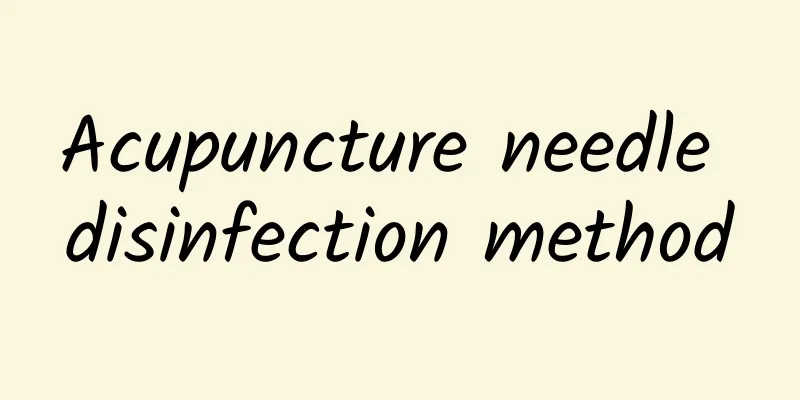How to care for upper gastrointestinal bleeding

|
A common disease in clinical practice is gastrointestinal bleeding. Gastrointestinal bleeding develops very rapidly and is very difficult to diagnose, so it often threatens the patient's life. The digestive tract is composed of the upper and lower digestive tracts, so there is a difference between gastrointestinal bleeding and upper and lower gastrointestinal bleeding. What we are discussing here is upper gastrointestinal bleeding, which refers to bleeding in organs such as the stomach and duodenum. Since upper gastrointestinal bleeding is such a serious disease, we should pay attention to the occurrence of this disease in our daily lives. The patients themselves and their families should do a good job in prevention and care of upper gastrointestinal bleeding. When the disease occurs, we will not be helpless and delay treatment, which will lead to serious consequences. Upper gastrointestinal bleeding nursing measures: 1. Lie quietly in bed, keep warm, and prevent cold or overheating. Generally, do not use a hot water bottle to keep warm. Overheating can dilate peripheral blood vessels and lower blood pressure. Avoid unnecessary movement. In case of vomiting blood, the patient's head should be tilted to one side immediately to prevent blood from entering the trachea and causing suffocation. 2. Provide spiritual comfort and relieve patients’ fear. 3. Immediately establish an intravenous access and try to get the infusion done as quickly as possible using a No. 9 needle. It is advisable to start infusion quickly, generally using normal saline, Ringer's solution plus sodium lactate, low molecular weight dextran or other plasma substitutes. At the same time, do a blood crossover test and prepare for blood transfusion. The amount and speed of blood transfusion can be determined according to the degree of bleeding. If pressurized blood transfusion is being performed, the nurse should monitor closely to prevent air from entering the blood vessels and causing embolism when the transfusion is terminated. 4. Hemostasis measures: (1) Give hemostatic drugs as prescribed by the doctor, such as adding 6-aminoacetic acid to 10% glucose and dripping it intravenously. (2) For varicose vein bleeding, when using posterior pituitary hormone, it should be slowly injected or infused intravenously after dilution. The speed should not be too fast to prevent side effects (it should not be used for patients with hypertension, coronary heart disease and pregnant women). When using a triple-lumen tube for compression hemostasis, refer to the application of triple-lumen tubes for care. (3) Ice saline gastric lavage: A special gastric tube with two openings is inserted into the stomach (if a special tube is not available, an ordinary gastric tube can be used; a three-lumen tube can be used for patients with cirrhosis). Use a 50ml syringe to slowly inject 0-4℃ normal saline into the gastric tube, and suck from the other opening to repeat continuous irrigation. The amount of water used depends on the condition of the patient. Generally, the amount of water used is about 10,000ml. It will take 30 minutes for the temperature in the stomach to drop and stop the bleeding. (4) Add 10-20 mg of norepinephrine to 500 ml of normal saline and drip slowly through a gastric tube. If the patient can take it orally, 50 ml can be taken orally every 2 hours to reduce portal vein pressure, thereby producing a hemostatic effect on esophageal varicose vein bleeding. However, it should be used with caution in patients with arteriosclerosis. (5) If fiber gastroscopy is performed in an emergency, preoperative preparation should be done. 5. Dietary care: fasting should be adopted in case of hematemesis, nausea, vomiting and shock. After the above symptoms are relieved, patients with ulcer disease should be given protein-rich liquid diet such as milk, cake or soy milk, and then change the type of diet and increase the food intake. The diet of patients with varicose vein bleeding at the lower end of the esophagus should be adjusted according to the degree of their liver function disorder. For patients with triple-lumen tubes, liquid diet should be injected through the gastric tube 24 hours after the bleeding stops. Patients with impaired consciousness should be given a protein-free diet. Those with ascites should appropriately limit their sodium salt intake. 6. Take good care of the oral cavity and skin. Since bleeding patients have a fishy smell in their mouths, they should clean their mouths three times a day. Patients with edema should strengthen skin care to prevent bedsores. 7. Closely monitor the condition: (1) Pay attention to measuring changes in body temperature, pulse, and blood pressure. If the patient has a fever, physical cooling can be used. Record the amount of water intake and output and urine specific gravity over 24 hours. (2) Pay attention to the nature, amount and color of vomitus and feces. The color of hematemesis and bloody stool depends on the amount of bleeding and the time the blood stays in the digestive tract. If the amount of bleeding is large and the time it stays in the digestive tract is short, the color will be fresh or there will be blood clots. If the amount of bleeding is small and the time it stays in the digestive tract is long, the color will be darker or black. Patients with vomiting generally have more bleeding than those with simple black stools. When the patient has symptoms such as thirst, irritability, cold sweat, blackouts, and fainting, fresh bleeding should be considered. (3) If the patient suffers from hemorrhagic shock, routine care can be given to patients in shock. If you become confused or restless, you should use bed rails to prevent yourself from falling out of bed. (4) After massive upper gastrointestinal bleeding, azotemia can easily occur due to the absorption of protein decomposition products in the intestine. Therefore, patients with cirrhosis should follow the doctor's instructions and carefully perform enema to reduce the production and absorption of ammonia. (5) Patients with esophageal varicose vein bleeding caused by portal V hypertension should be closely monitored for prodromal symptoms of coma. Early treatment is very important. If hepatic coma occurs, routine care should be provided for comatose patients. The above article introduces seven aspects of how we care for upper gastrointestinal bleeding. Upper gastrointestinal bleeding is a very serious disease, and it comes on very quickly and has very serious consequences. Therefore, we must master how to care for this disease so that we can deal with it well when it occurs, so as not to affect our health. |
<<: How long can you live with bone cancer?
Recommend
What are the symptoms of anxiety disorders?
Patients with anxiety disorders will have very ob...
Sugar, fat and protein conversion
Carbohydrates, fats, and proteins are all importa...
What to do if there is something rubbing against your upper eyelid?
In daily life, if you feel a foreign body on your...
What can't children eat if they have water beans?
Many babies will develop chickenpox due to infecti...
What are the benefits of Ganoderma lucidum
We often see in TV series that when the protagoni...
What are the sequelae of encephalitis?
Encephalitis itself is a very serious disease, an...
What are the dangers of frequent hair pulling?
Frequent hair pulling is mainly due to some gray ...
Can varicose veins during pregnancy be relieved after giving birth?
Pregnant women are vulnerable to varicose veins d...
What to do if baby gets prickly heat on neck
Many parts of the body may be troubled by prickly...
Brown discharge after 15 days of medical abortion
Medical abortion is what we often call drug abort...
The efficacy of leek seeds soaked in wine, drinking regularly can treat these diseases
Among the various methods of brewing wine, the ef...
What is the reason for more leucorrhea
Women start to have leucorrhea when they are in t...
What should I do if I have diarrhea and bloody stool?
If you often have diarrhea and bloody stools, it ...
What are the symptoms of cholecystitis? Early warning of cholecystitis
The function of the gallbladder is to store and c...
Can I feed my newborn baby if he hiccups?
Newborns will hiccup before they are born. After ...









